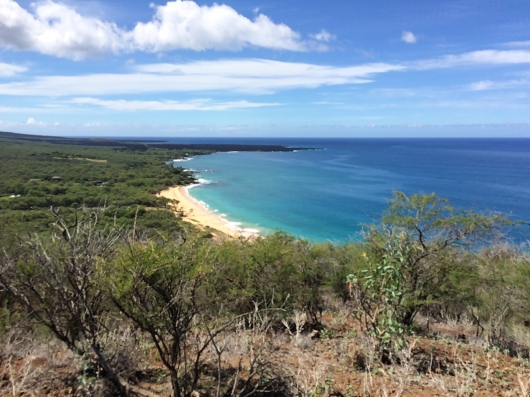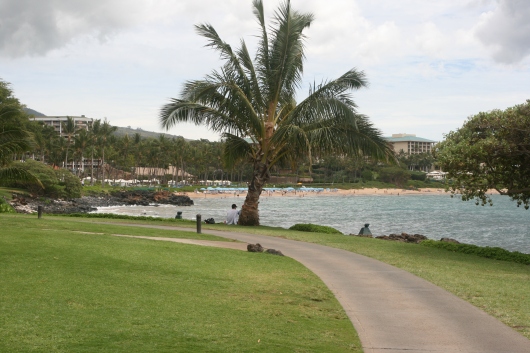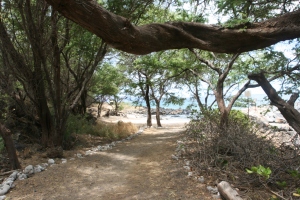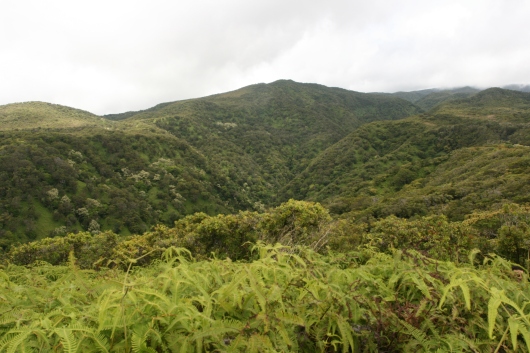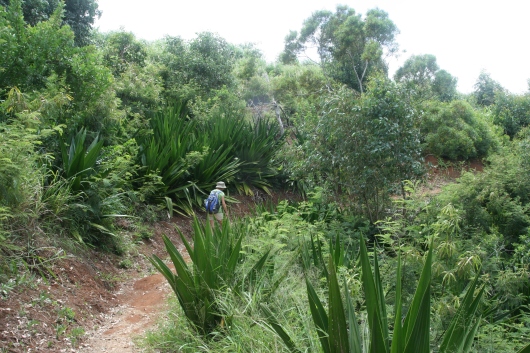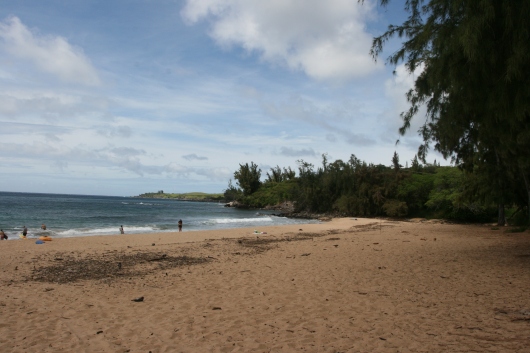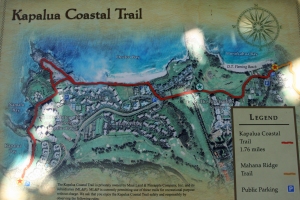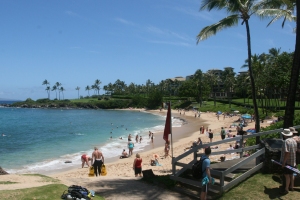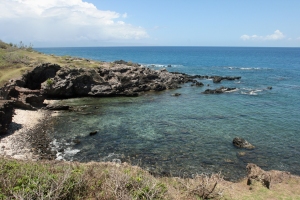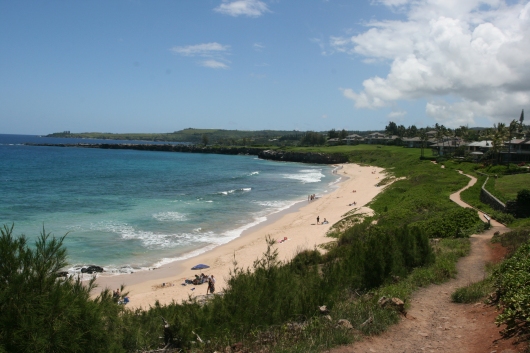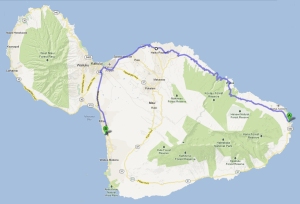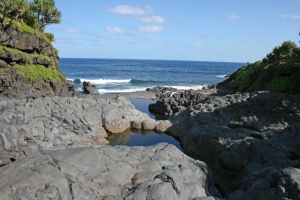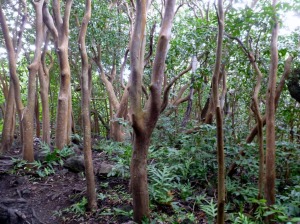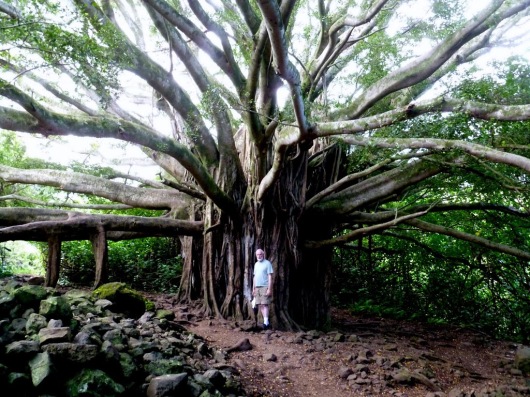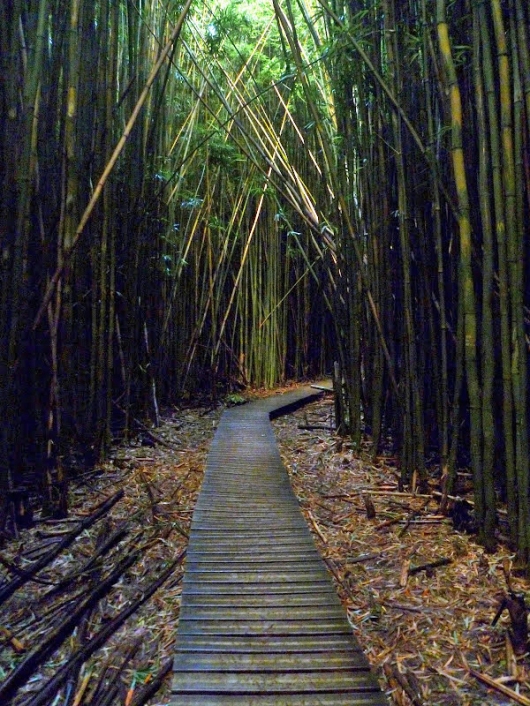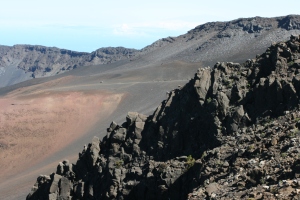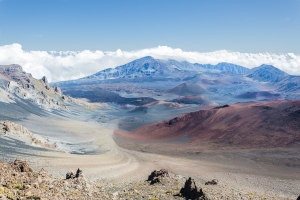Pu’u Olai is a 360 foot tall cinder cone in the middle of Makena State Park. A dominant feature on the southwest coast of Maui, Pu’u Olai is visible from almost everywhere in west Maui and as far north as Olowalu on the road to Lahaina. If you want to get to Makena, just drive toward Pu’u Olai.
Big Beach is on the south side of Pu’u Olai; Little Beach on the west side, and Black Sand Beach is to the north.
Numerous trails lead to the summit of Pu’u Olai. It’s a short, but sometimes steep, hike. We took a trail that starts from the road to Black Sand Beach, maybe 50 yards from the parking lot at the end of the road. Most of the trail is entirely exposed, so go in the morning before it gets hot. Take water and enjoy the view. Hiking shoes, tennis shoes, or (at minimum) strap on sandals are recommended. Parts of the trail are composed of loose gravel – not a problem going up, but potentially hazardous coming down.
On a clear day you can see Mauna Loa and Mauna Kea on the Big Island, the uninhabited island of Koho’olawe, Molokini (where the snorkel boats go), Lanai, Molokai, and, of course, Mt Haleakala, the West Maui Mountains, and most of Maui.

